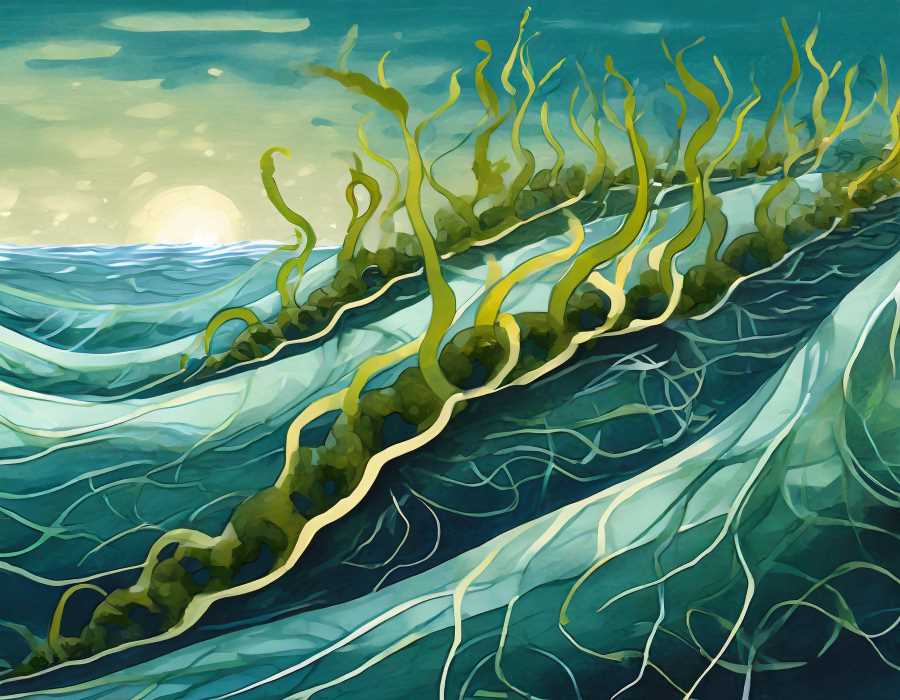Mexican Researchers Craft Green Solutions from Seaweed
From beach blight to bio-brilliance: Mexican researchers transform sargassum seaweed into sustainable paper, filters, and water treatment systems, saving the Caribbean's biodiversity.

In the azure waters of the Mexican Caribbean, an unlikely hero emerges from the depths – Sargassum. Yes, that seemingly insufferable seaweed carpeting the pristine beaches has now become the focus of an ingenious project by the National Autonomous University of Mexico (UNAM). In an exclusive interview, Dr. Rodolfo Silva Casarín, a researcher at UNAM's Engineering Institute, shared how they're not just combating the coastal invasion but turning it into a valuable resource for of the environment and local communities.
So, what's the grand plan? It involves revaluing the troublesome sargassum and utilizing its rich cellulose content for creating an array of products, ranging from paper to membranes and filters. Dr. Silva Casarín revealed that this groundbreaking endeavor is a collaborative effort involving the brainpower of researchers from various institutions, including the National School of Higher Studies Mérida, the Institute of Marine Sciences and Limnology, the National Laboratory for Sustainability Sciences, the Center for Applied Physics and Advanced Technology, and the Renewable Energy Institute.
In their quest for sustainable solutions, the team has crafted membranes that go beyond the mundane – capable of eradicating pesky dyes from the textile industry and doubling up as filters to eliminate emerging contaminants, notably pharmaceutical residues. As if that wasn't impressive enough, they're even dabbling in the creation of a small-scale wastewater treatment system tailored for the peculiar karst subsoil prevalent in the Caribbean region.
Presenting their progress at the Interdisciplinary Research Groups event, Dr. Silva Casarín disclosed that the membranes are ready for action, poised to manufacture filters for water, oils, and emerging contaminants. It seems like they're turning sargassum from a headache into a helpful hand.
To unlock the potential of this seaweed superhero, there's a critical step – drying. The sargassum needs to bask in temperatures between 40 and 50 degrees, a process that miraculously concludes in just over a day. Once dried, the cubic meter of sargassum sheds its water weight, reducing the problem to a mere one percent.
But why the rush to dry? Well, it turns out, when sargassum lacks oxygen, it transforms into a smelly brew of decomposition, releasing the unpleasant aroma of hydrogen sulfide and putrefactive matter. Storing it is a big no-no, so it's a race against time to process it before it hits the beach.
Dr. Silva Casarín emphasized the importance of snatching the seaweed from the clutches of the ocean before it starts its decomposition. The dried sargassum is then ground and, depending on its intended purpose, activated with copper or silver nanoparticles. It's like alchemy, but instead of turning base metals into gold, they're turning beach nuisances into environmental treasures.
Why bother, you ask? Well, according to the numbers from the National System of Researchers and the American Society of Civil Engineering, a staggering 20 billion cubic meters of sargassum invade the Mexican Caribbean annually. To put it into perspective, that's like encircling the planet with a pipe boasting an 80-centimeter diameter. The impact is profound, especially in an area celebrated for its biodiversity, featuring seagrass meadows, coral reefs, beaches, lagoons, and wetlands.
As Dr. Silva Casarín pointed out, the sargassum influx is not just a visual eyesore; it's altering the very composition of the water, resulting in the replacement of vital ecosystems with other algae. The degradation is particularly concerning given the region's reliance on tourism, which thrives on the beauty of the natural biogenic wonders.
In the past 25 years, this paradise has witnessed a decline, posing a substantial challenge to the preservation of its unique ecology. Yet, UNAM's innovative approach could be the beacon of hope, transforming the sargassum menace into an opportunity for ecological restoration and sustainable innovation. It's time to embrace the magic of science – where a once-unwanted seaweed becomes the star of the show, saving beaches and ecosystems alike.




